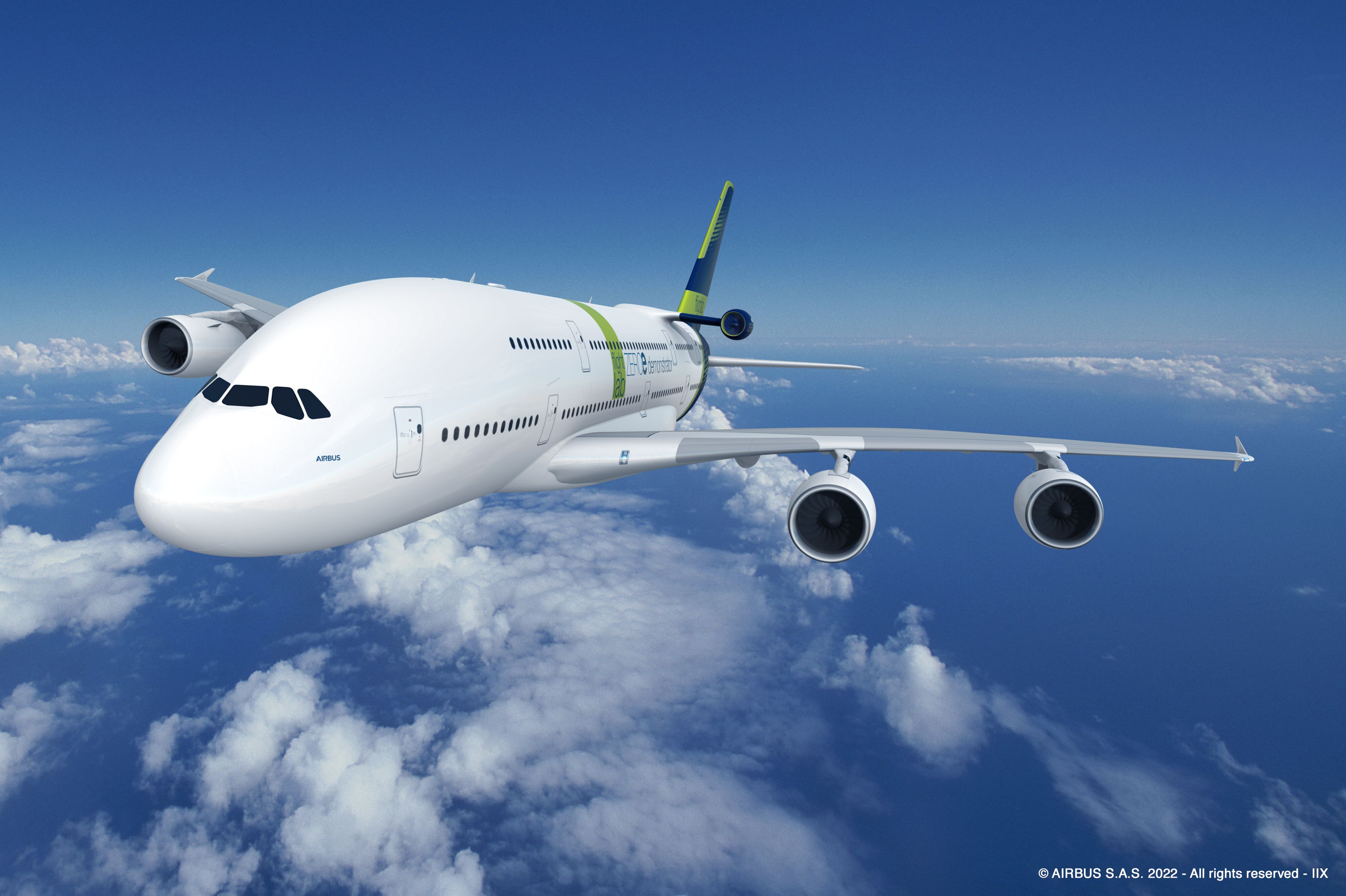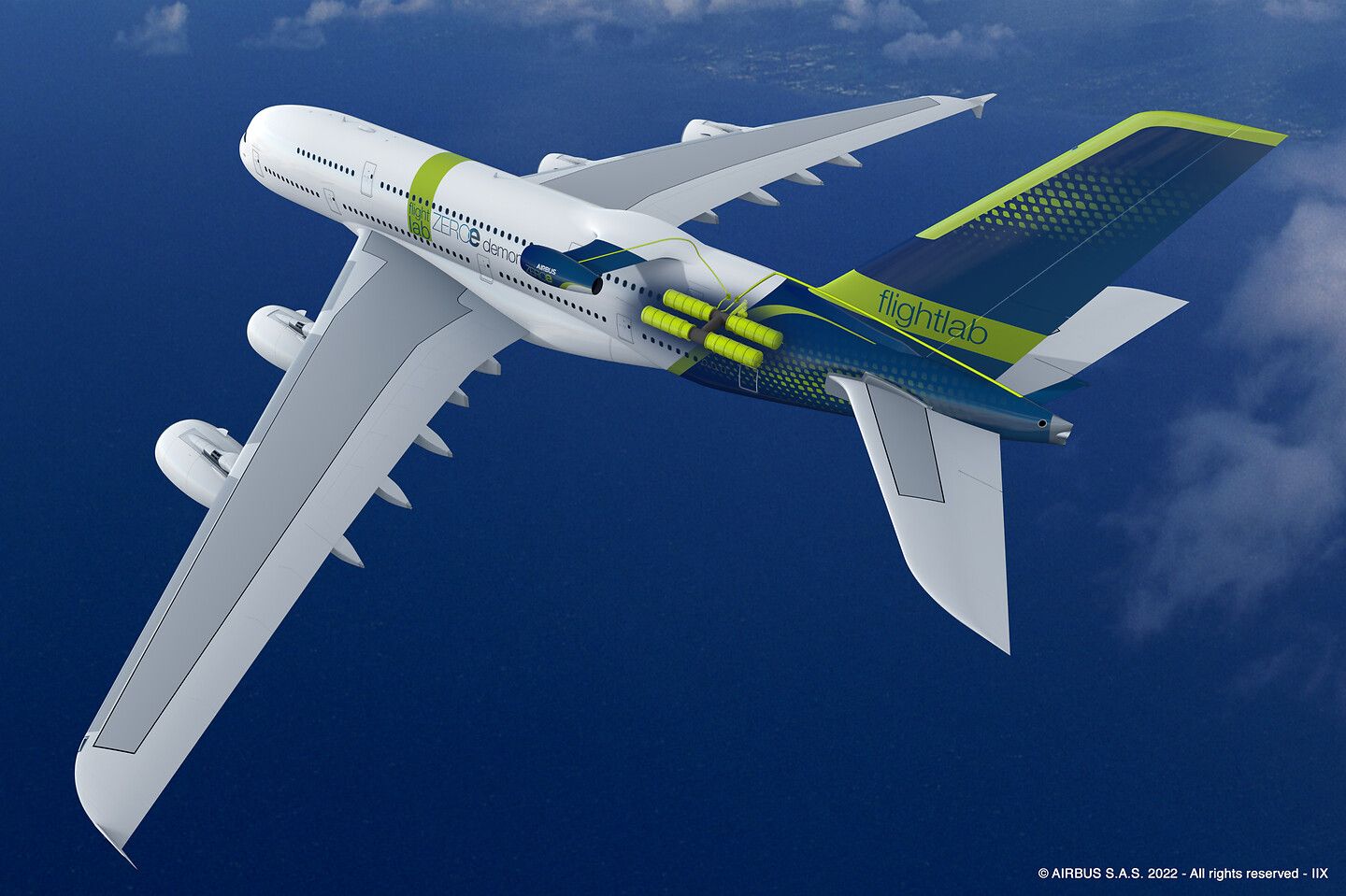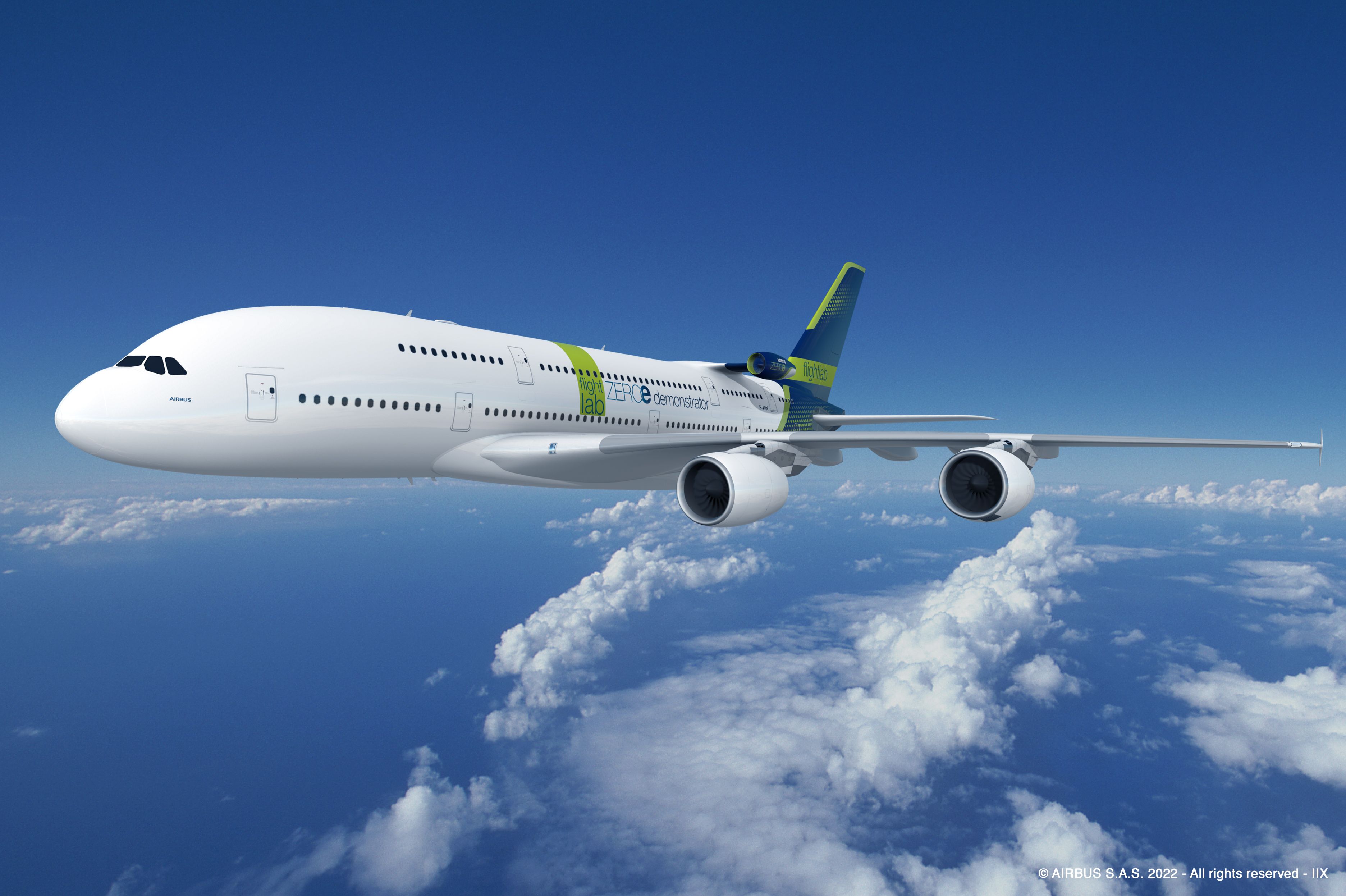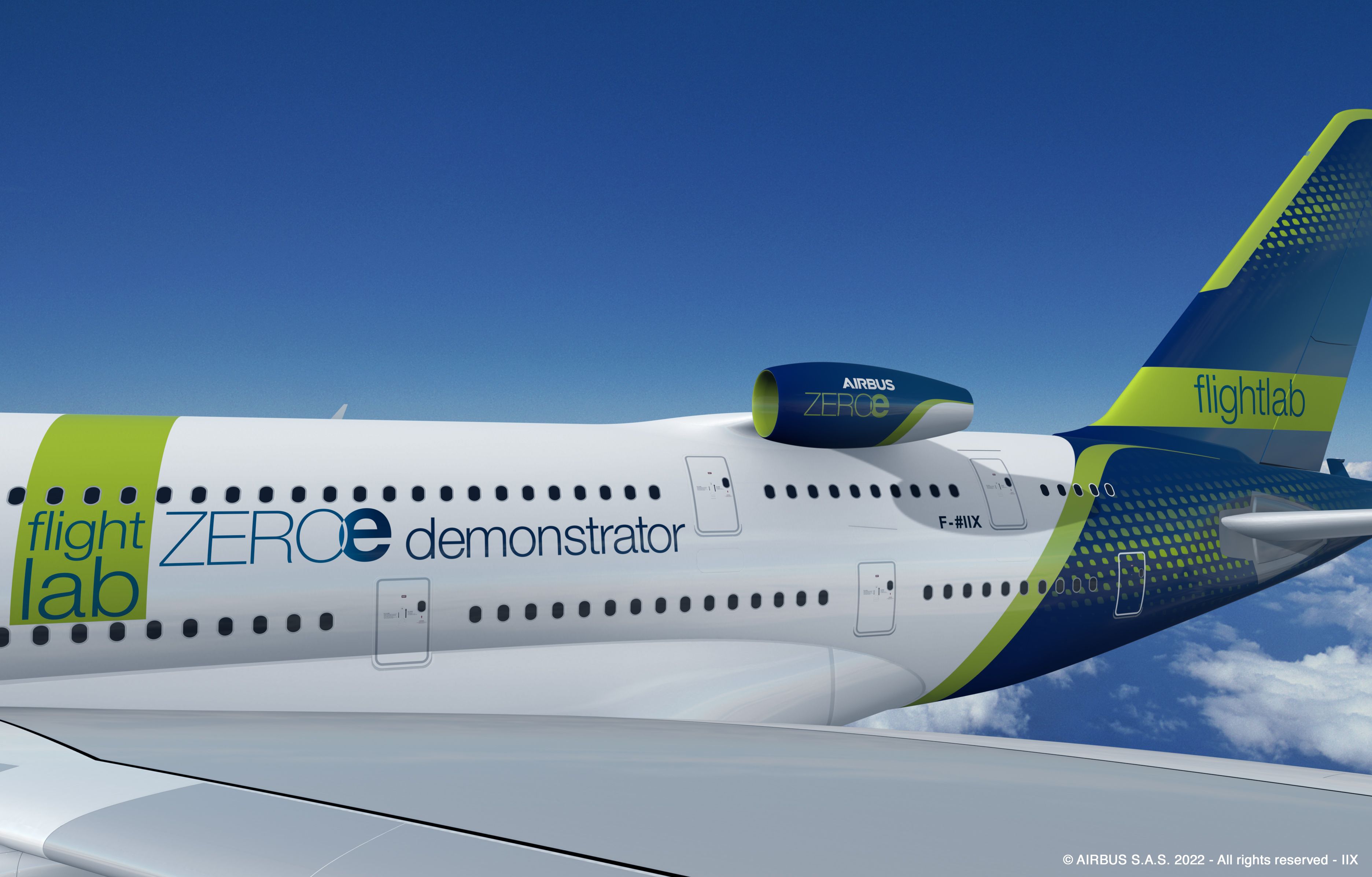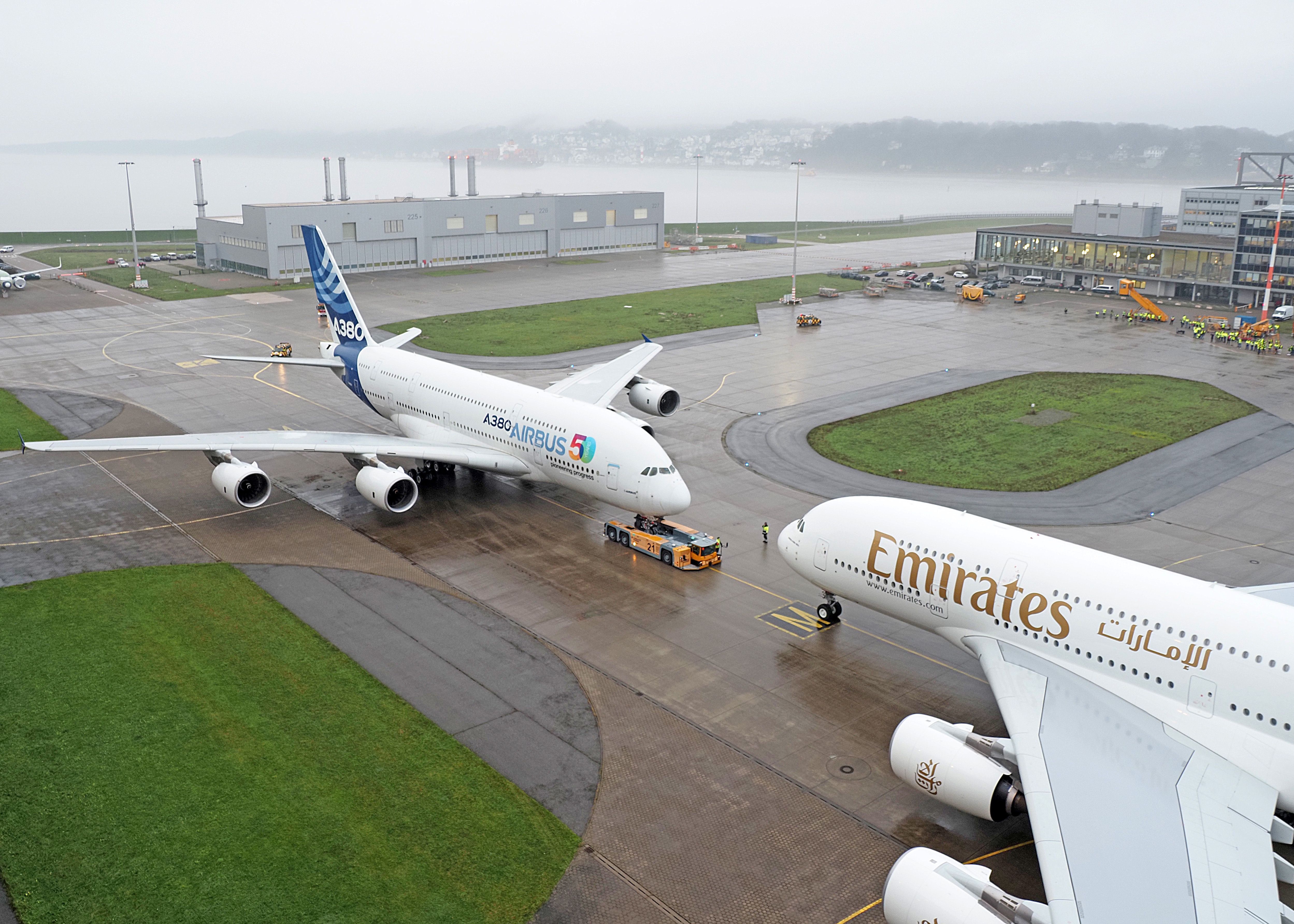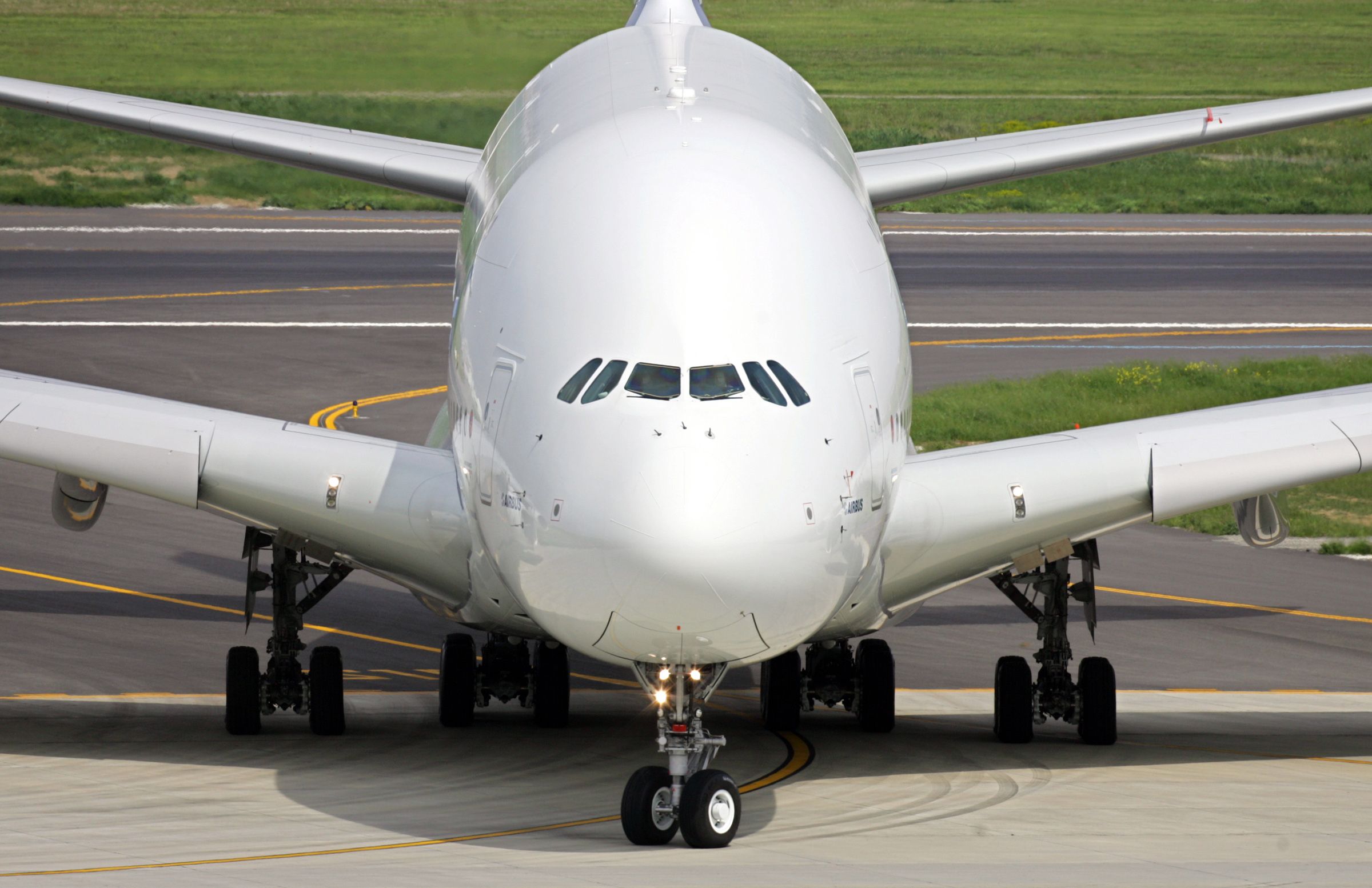Earlier today, Airbus revealed that it had chosen the mighty A380 as a flying engine testbed for its ZEROe zero-emissions hydrogen engine. The aircraft type itself is aging a little by this point, though the design characteristics that make it unpopular with many airlines in a post-pandemic world actually make it perfect for such tests.
A tremendous amount of cabin space
The Airbus A380 is the largest passenger aircraft in existence. Across three decks, there is plenty of space to go around the plane. The planemaker will need a lot of room for the ZEROe tests to take place. This starts with the hydrogen tanks that will be used to power the test engine.
It is intended that the hydrogen tanks be placed in a hermetically sealed container at the rear of the aircraft's main deck. Hermetically sealed means that the container is airtight. Essentially hydrogen can't escape, and air can't enter. This, in itself, will likely take up a large chunk of space. However, Airbus has yet to detail exactly how much space it will take up in this early testing stage.
The jet will also require a serious amount of additional equipment onboard to support such engine tests. This will primarily comprise equipment to record data from the aircraft and work stations where test engineers can view this data in real-time. More space available means that more of these workstations can be installed.
Of course, Airbus will also likely seek to establish some comfort areas onboard the aircraft in case of prolonged test flights. The A380 has an incredible design range of over 15,000km (9,320 miles), meaning that particularly long test flights should be possible, assuming the hydrogen supply doesn't run out sooner.
Four engines offer more redundancy than two
While not preferred, a twinjet can complete a flight on one engine should the circumstances dictate. This is the basis for ETOPS rules, after all. However, when testing new engine technology, engine manufacturers have typically chosen a quadjet such as the Boeing 747 for such tests.
The reason such aircraft are preferred is their redundancy. Only one engine is left if an existing engine fails on a twinjet. Meanwhile, such a situation on a quadjet means that just 25% of the total power is lost. It's essential to bear in mind that in the case of Airbus' design, the hydrogen engine is just along for the ride, rather than being used explicitly to power the behemoth. Some testbed designs see the engine being tested replacing an existing engine.
It wouldn't be ideal for Airbus to be seen testing its ZEROe technology on one of its competitor's aircraft. Airbus only has two products with such an engine configuration. These are the Airbus A340 and the Airbus A380.
More engine placement opportunities
The large fuselage area of the Airbus A380 also presents additional options in terms of the placement of the hydrogen engine being tested. The addition of the second deck essentially doubles the amount of fuselage available to attach the engine to.
When smaller engines are tested on a Boeing 747, they are typically attached to a strut on the upper deck. This positions them out of the way of any possible interference, such as the exhausts of the aircraft's main engines. On the A380, Airbus has chosen to place the test engine towards the rear of the plane on the left if you look at it from the back. The aircraft is also attached to the plane in line with the top of the plane, placing it well clear of any interference.
Airbus has an A380
While it may be overlooked, another good reason for Airbus to pick the A380 is that it has the plane already. The planemaker has opted to use the very first A380 for the engine tests, MSN 001. This aircraft was designed with testing at its core. The airframe was the first A380 to fly and played a crucial role in the flight test program up to the approval stage.
Since the type achieved certification, the aircraft has remained active, being used for testing photo-ops in the following years. One of its more recent missions saw the jet flying to the Airbus plant in Finkenwerder, Hamburg, where the first A380 met with the last A380 shortly before the latter's delivery.
The future of 001
In response to a question from Simple Flying, Airbus revealed that MSN 001's role would not be over once the ZEROe program is over. While exact plans have yet to be made, Airbus revealed that it would continue to use the aircraft for years to come, calling it an asset. Airbus is planning the first ZEROe flight for 2026. One would imagine that the aircraft will be engaged in zero emissions test flights for the foreseeable future.
Emirates is likely to be the last Airbus A380 operator and has previously revealed that it intends to fly the giant of the skies until the mid-2030s. With this in mind, this Airbus A380 is unlikely to be used for another testing initiative directed at the giant of the skies. However, for all of the reasons mentioned above, the aircraft certainly is an asset.
While the aircraft, registered as F-WWOW, is used for a lot of testing, its total hours are likely to be far fewer than that of an A380 continuously flying from London to Sydney and back. Lower usage can keep an aircraft flying for an extended period. This principle is best demonstrated with the Antonov An-225. This specific plane is already 33 years old. However, its owners believe it has quite a few years left, as its actual flying time is still pretty low thanks to its occasional use.
What do you think of Airbus' decision to use the A380 for the ZEROe test program? Let us know what you think and why in the comments!

